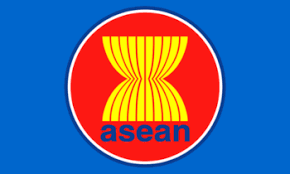India in the ASEAN Geopolitical Construct
The Association of Southeast Asian Nations (ASEAN) has a geopolitical dimension that people outside the foreign policy circuit in India may not be sufficiently aware of. The ASEAN has always wanted to influence the shape of the regional order in Southeast Asia and the role of major powers in it. How can a group of ten relatively small countries aspire to manage the geopolitics of a region that is stalked by military or economic giants like the US and Japan and rising behemoths like China and India with populations of more than one billion each?
Traditionally, the ASEAN has regarded the US, China and Japan as the major powers that have the greatest impact on Southeast Asia. But increasingly India is becoming the fourth major power in this ASEAN calculus because its high economic growth rates point to expanding economic as well as military clout. India became a full dialogue partner of ASEAN and a member of the ASEAN Regional Forum (ARF) in 1996. In recent years India’s relation and cooperation with member countries of the ASEAN and the region have multiplied in the political, economic and security spheres.
In fact, the ASEAN does not believe in trying to keep the major powers out of the Southeast Asia region. Rather, with a long experience of interaction with outside powers, it seeks a balance of their interests in the region. The ARF has remained a key vehicle for ASEAN’s efforts to shape the geopolitics of the region. Besides, there are other designs include the dialogue relationships, the ASEAN Plus Three grouping, and the East Asian Summit of which India is a member.
Despite growing interactions between India and the ASEAN region in last few years, Southeast Asia’s links with Japan, the US and China are still much deeper and more extensive. This is clearly demonstrated by trade, investment and aid figures. Thus there is still much room for India to expand its ties with this region. Singapore’s former Prime Minister and current Senior Minister Goh Chok Tong has described India as the western wing of the ASEAN jumbo jet, the eastern wing being China, Japan and Korea, suggesting the desirability of a better balance if the plane is to take off and remain steady.
Perhaps no single document spells out explicitly and comprehensively the contents of the ASEAN’s geopolitical vision for the region or beyond. However, broadly speaking, the ASEAN seeks absence of hostility between the major powers, especially the US, China and Japan because hostility will adversely affect stability, and consequently, the economic prospects of the region. At the same time, ASEAN may not want a concert of major powers which would limit Southeast Asia’s options, as the old adage goes- 'the grass gets trampled whether the elephants fight or make love'. The ASEAN favours a balance of the influence and interests of the major powers so that none is too dominant in the region and supports benign and cooperative policies of the major powers towards the other smaller countries of the region.
However, the ASEAN group is not without some levers of influence. One is the strategic location of the region that astride the sea-lanes between the Indian and Pacific Oceans, which are critically important to the major powers for commerce and military passage. Second, with a growing market of over 550 million people, substantial natural resources, and a combined GDP about as large as India’s, the ASEAN region is not economically insignificant. Third, ASEAN’s position in the ‘driver’s seat’ of key organizations like the ARF, ASEAN Plus Three and the East Asian Summit gives it some clout to help shape the regional order in consultation with the major players. It is because of these factors that ASEAN is being courted by the major powers as they compete for influence in the region, a competition that ASEAN can also exploit to its advantage.
The ASEAN-sponsored institutional structures ultimately rest on a sub-structure of power arrangements in which the US security presence has had a vital role for many years. The whole edifice could be destabilized in the future by shifts in this underlying balance, or by possible crises in relations between the major powers, especially in US-China relations. On the other hand, globalization has greatly increased interdependence between the major powers and they are well aware that conflict between them would be vastly destructive. This offers ASEAN an opportunity to make a contribution to maintaining the peace.
How successful the ASEAN will be in realizing its geopolitical aspirations will depend partly upon how united ASEAN is and partly on how supportive the major powers are to this design. At the moment, the interests of the major powers seem to align more in favour of ASEAN’s aspirations, with all of them wanting to avoid conflict for their own different reasons. But there is no guarantee that this will always be so. The ASEAN’s prescriptions are, after all, based on an appeal to good sense, a measure of peer pressure and moral persuasion, without any force to back them.
The ASEAN believes that its vision of a regional order is in the interest of all major powers, including India. As Prime Minister Lee Hsien Loong said in his ASEAN Day lecture on 7 August 2007: “ASEAN is non-threatening, enjoys good relations with all the major powers, and provides a neutral core around which to develop the regional architecture.” The ASEAN scheme obviously serves well the interests of India by giving it a stake in the region on par with the other three major powers, even though India, as of now, has significantly smaller economic or security presence in the region than the others. The ASEAN desire to keep the Southeast Asian region ‘open’, by preventing domination of it by any single outside power, must surely find favour in New Delhi.
